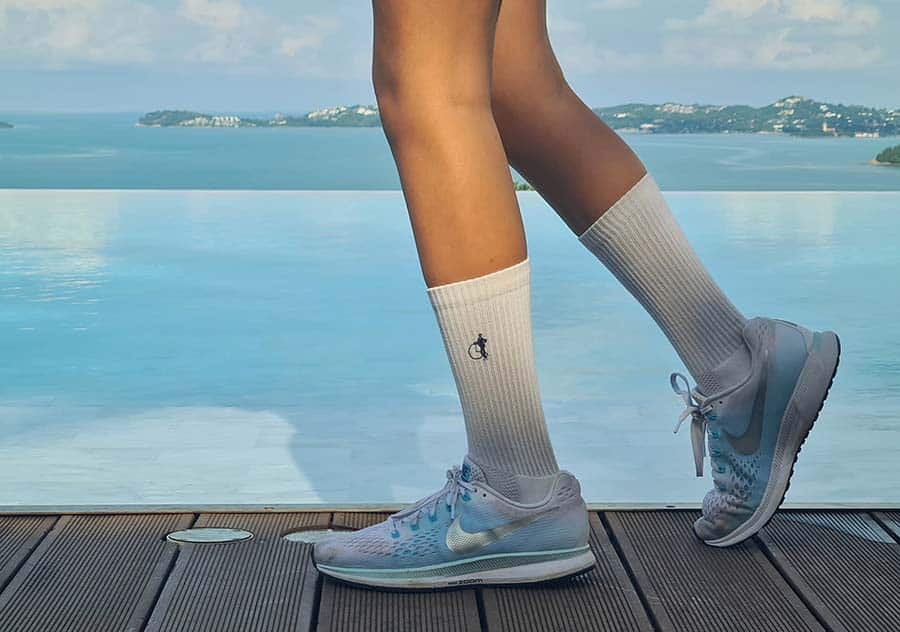I have two teenage girls who are at an age where whatever Tik Tok commands regarding body image is what they are influenced by. My thin daughter is always talking about how massive her rib cage is and how she has huge arms and shoulders. What she is referring to is the return of the fashion week models visibly malnourished, with deeply sunken cheeks and protruding bones. The images below are my 15-year-old daughter’s current body weight and look.
Indeed, the allure of seeing ultra-thin models on the catwalk remains as potent as ever. For those struggling with eating disorders, though, any exposure to such content is fraught with difficulty – regardless of how much they may desire normality and an absence of distress.
I have been to London Fashion Week, Paris Fashion Week and Pitti Uomo in Florence and have been to many backstage events. The food served is utter fast food rubbish, with no fruit in sight. No models I noticed bar the male ones were eating. The bullying during these fashion weeks is brutal and very unhealthy PR’s are very rude with their comments too.


Protruding Bones For Runways
Within recent months the international fashion press has been staggered to perceive a phenomenon that is altogether more intractable than one might be inclined to brush aside as soon as designers triumphantly conclude their presentation. The reason for this consternation: an excess of models who appeared on stage visibly malnourished, with deeply sunken cheeks and protruding bones searingly casting an ominous pall over what ought to be a performative experience that inspires rather than repels.
As the fall season arrived, Vanessa Friedman of The New York Times became immersed in Jason Wu’s collection at New York Fashion Week. Dissatisfied with the unnaturally thin stature of many models featured in his presentation, she later stated that Wu was not her sole target – other designers were also on her radar screen.
The campaign group Including the Curve, which tracks the composition of each fashion season’s castings, has ascertained that during London Fashion Week earlier this month, only 71 jobs out of 2,640 were available for catwalk models who are plus-size.
While the resurgence of mini skirts may elicit varied reactions, its return heralds a calamity for all: ultra-low size-zero models will henceforth be consigned to an ignominious history. Since heroin chic dominated aesthetic sensibility in the 1990s, no model has appeared so emaciated and disfigured – not even during those days when fashion was enamoured with a minuscule appetite!
I am in Asia where I see poverty all the time and the difference between malnourished poor people and models on the 2023 runway is the same look. The image is from Canva.com but I walk around Thailand seeing people living in this exact background. minus the dress.

Extreme-Underweight Fashion Trend
Why is the extreme-underweight fashion trend making a resurgence in today’s market? Some might speculate that the rise of pandemics coupled with economic hardship has prompted some brands to rekindle their aggressive sales efforts by doubling down on tried-and-true shock tactics; ones which have previously yielded positive results.
One suggested explanation is that the issue of dangerously anorexic models was merely masked by a brief trend towards more ethnically diverse casting. As this shift in focus subtly shifted the attention from heightened concerns about emaciated young women to older, curvier or even distinctly ethnic representations – a shift which only temporarily alleviated anxiety around such issues.
Atop this, an increase in body diversity was visible: according to a report from the website The Fashion Spot, the New York Fashion Weeks spring 2020 collection featured 68 plus-size or curvaceous models – double that of last season’s six. Why are luxury fashion labels like Gucci and Balcienga not being held accountable regarding body image marketing?
One famous model who struggles with drugs is Cara Delevingne, even last year she looked like a girl from Africa needing food.
Paris Anorexia Fashion Weeks
Paris, the cradle of couture fashion, is the metropolis where models’ slenderness causes acute distress to those who are well-acquainted with the industry. An esteemed British fashion editor offers this observation: “The Saint Laurent models were always on point at their last show, but when I saw them in September I couldn’t help feeling awestruck.”
Observing the attire donned by Jennifer Coolidge at this past Sunday night’s Screen Actors Guild Awards Ceremony, one might be easily surprised by its sartorial splendour. A Saint Laurent dress accented with a plunging V-neckline and showcasing her delicately contoured clavicle in all of its magnificence was originally crafted to visually accentuate her prominent cheekbones and create an air of gauntness that adds extra impact to both the mise en scène.
Teenager girls are not looking like the models we see on the runway.
There is a reason Ciny Crawford hangs around her daughter for her modelling career, Cindy knows the sexual abuse, drugs, no eating culture fashion shows and models are exposed too.
Why Are We Not Ceasing Zero Thin Models
Over the years, numerous efforts have been made to bring order to the use of ultra-thin models. In 2016, a Women’s Equality Party-led campaign demanded that British designers and retailers cease using size zero apparel – with an aim of combating eating disorders. In 2017, France enacted legislation banning picturesquely diminutive specimens in a bid to assuage health concerns; necessitating that they provide not only any medical records but also proof from their physicians attesting to their overall well-being.
Anorexia nervosa is among the most lethal mental illnesses, with a mortality rate that far exceeds any other condition. However, it would be foolhardy to lay the blame solely at the feet of magazine-model thinness; there are countless contributing factors involved such as unhappiness and self-loathing from sufferers – aspects addressed in Hadley Freeman’s forthcoming book Good Girls: A Story and Study of Anorexia.
In the phenomenon of anorexia, adolescence is typically its onset point. This suggests that it stems from those young women’s innate apprehension relating to adulthood and becoming a woman. All Western girls have been inundated with messages suggesting thinness as the ultimate goal for contentment; making this condition all too common today.
Tales of models who were pressurised to shed pounds abound; both by their agencies and occasionally by fashion designers who deemed casting any individuals whose figures might not be ideal for their designs as inappropriate. But with the revival of an allure for ultra-thin beauties, it could hardly have been more inconvenient timing.
Should luxury brands be banned from a season of fashion weeks due to unhealthy body image marketing.
Eating Disorders On Tik Tok Trends
According to Beat, the UK eating disorder charity, an estimated 1.25 million Britons currently contend with eating disorders. Post-pandemic times have been particularly challenging for NHS and associated services; between 2021 and 2022 they registered a mindbogglingly colossal increase in support sessions provided via helplines or online chats – an increase of over 300% compared to pre-pandemic levels.
As a mother of two girls, I am very concerned about watching my children’s eating habits. Food for us is a lifestyle and we do eat well across all cultures. My girl’s thanks to me and my Italian upbringing create a positive eating food lifestyle and culture. We had a wonderful afternoon tea in Hoi An Vietnam this week, they loved the feng shui and the mindset towards cakes and cookies.


Undoubtedly, the pervasive prevalence of social media plays a major role in eating disorders. The content disseminated on platforms such as TikTok may lead to unrealistic body ideals and contribute to disordered eating through posts that detail abnormal behaviours or provide snapshots showing before-and-after images – all this with the aim of encouraging weight loss. Tom Quinn, director at Beat, stresses how critical it is for people who are struggling with anorexia or bulimia not only to seek professional help but also refrain from using these platforms as a means of achieving their objectives
Nearly 10.5 million people have viewed videos featuring size zero on TikTok; 260 million viewings were accrued for videos discussing buccal fat removal– a condition that doesn’t prompt an eating disorder in most cases but can be used to exacerbate existing behaviours and induce thoughts of self-hatred, notes Quinn.
















You must be logged in to post a comment.